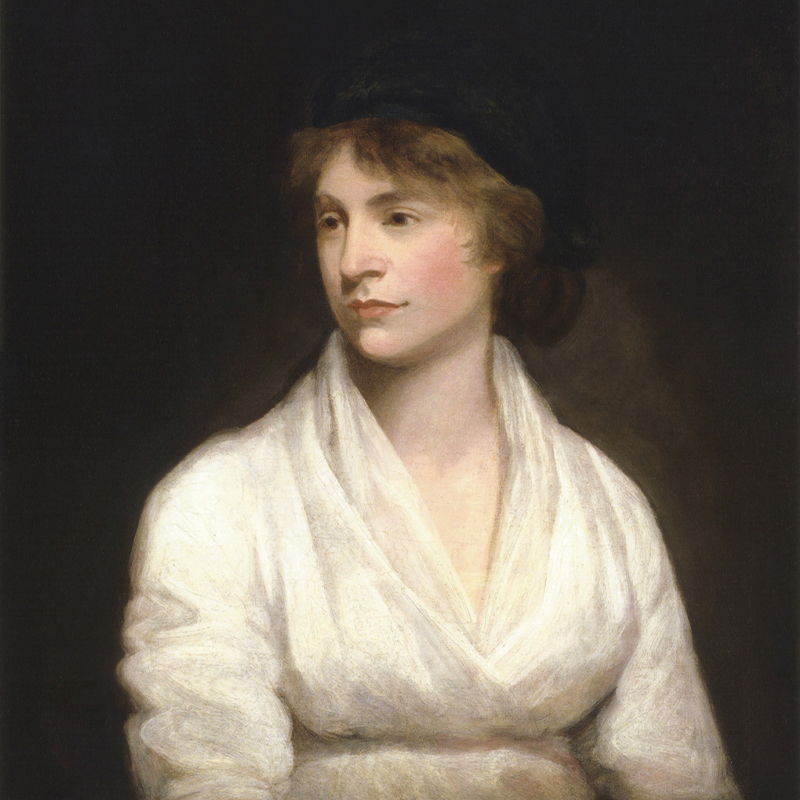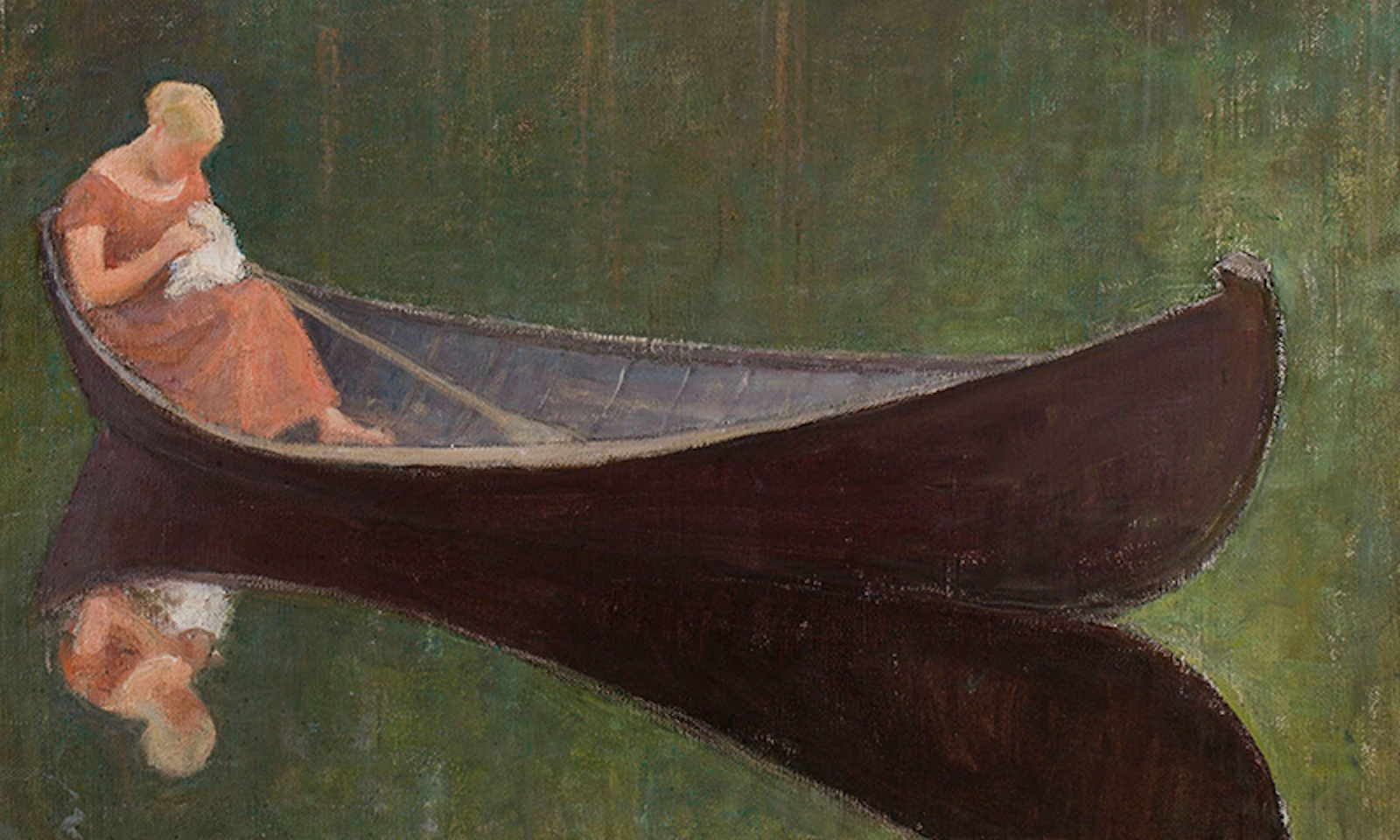One windy day in June 1795, Mary Wollstonecraft, her 1-year-old daughter, and her nanny, with a small crew of men, pushed off in a boat into rough waters from a port on the eastern shore of England. Wollstonecraft’s baby wriggled in her arms as the boat rocked and swayed in the gigantic gray waves of the North Sea. Yet Wollstonecraft would not be deterred by the dangers of the passage. This was an opportunity for her to write about her travels and to capitalize on her reflections by selling her stories. When the jagged shoreline of Sweden finally appeared after days of endless ocean, she began to record her observations.
Wollstonecraft wrote about how traveling as an unattached woman could be unsettling: when she had to stay at the cabin of a strange man.1 It could be demeaning: During a dinner conversation, her male host complimented her for asking “men’s questions.”2 And it could be enraging: when she learned that men in the Swedish village she was visiting stood by unbothered as women washed linens in an icy river, causing their hands to crack and bleed.3 “The men stand up for the dignity of man, by oppressing the women,” she observed.4 Her heart was heavy when she thought of her daughter, who would one day experience being a woman in the world: “I feel more than a mother’s fondness and anxiety, when I reflect on the dependent and oppressed state of her sex,” she wrote. “Hapless woman! what a fate is thine!”5
Her hope was for women to live, work, and think as freely as men.
From a young age, Wollstonecraft aspired to support herself so she would not need to depend upon a man for her well-being. This was a hope that she had for all women and that she expressed in her philosophical and literary works. By her early 30s, she was already the well-known author of A Vindication of the Rights of Woman and had achieved her dream of self-sufficiency through her writing.
Wollstonecraft’s travels around Scandinavia provided her with an opportunity to unleash her insatiable curiosity and powers of reflection. Her uninhibited and wide-ranging examination of landscapes and lifestyles challenged the philosophy of Rousseau, found observational support for the theory that evolution selects for species and not individuals, and captured astonishing encounters in the natural world, as when her boat drifted over a constellation of sea creatures “like thickened water” that closed at the touch of her paddle.6

The other motivation for her trip was more personal. She was chasing down a ship captain on behalf of Gilbert Imlay, the father of her daughter, Fanny. Imlay had sent Wollstonecraft to Scandinavia both to attend to some business on his behalf (the details of which are unclear) and, also likely, to shake her off.7 It was a humiliating mission made worse by the fact that only two weeks before her departure, Wollstonecraft had attempted suicide after learning Imlay had cheated on her with a young actress.8 (A man his age, he said, needed “variety.”) Although it wasn’t easy, she was willing to forgive Imlay, harboring hopes that her travels would cement her and her daughter’s fate to his. But as each day on her trip passed, these hopes dwindled. “I am weary of travelling – yet seem to have no home – no resting place to look to. – I am strangely cast off. – How often, passing through the rocks, I have thought, ‘But for this child, I would lay my head on one of them, and never open my eyes again!’”9
Being rejected by Imlay was traumatic, as was the realization that a man had the power to make her miserable. In Rights of Woman, she’d disparaged women for putting themselves in a position like this, characterizing those who staked their well-being on men as “weak, artificial beings” with a “spaniel-like affection.”10 She warned that “many innocent girls become the dupes of a sincere, affectionate heart”11 and was disillusioned when this happened to her. She shared these thoughts in a letter to a friend: “It seems to me, that my conduct has always been governed by the strictest principles of justice and truth. – Yet, how wretched have my social feelings, and delicacy of sentiment rendered me!”12
The intrepid journey did not cure the ills at home. When Wollstonecraft returned from abroad, she discovered that Imlay was with a new woman. She threatened suicide again: “I shall plunge into the Thames where there is the least chance of my being snatched from the death I seek … In the midst of business and sensual pleasure, I shall appear before you, the victim of your deviation from rectitude.”13 Then she went to a quiet bridge outside of London, tied rocks to her legs, and tipped over into the river. To her consternation, bystanders pulled her out and revived her. Months later, she finally gave up on Imlay and told him: “It is now finished.”14 She would raise Fanny on her own.
Mary Wollstonecraft is an important part of the Enlightenment story, one that isn’t often told in philosophy classes or textbooks.15 She lived and wrote at a time when significant shifts in science and philosophy were ushering in new standards of objectivity—and, along with them, fresh theories of women’s inferiority. Wollstonecraft responded with a bold, unbridled voice of opposition: “I think the female world oppressed; yet the gangrene, which the vices engendered by oppression have produced, is not confined to the morbid part, but pervades society at large.”16 Her aim was to draw awareness to the ways in which social systems and institutions abet the oppression of women, and her hope was for women to live, work, and think as freely as men.
She didn’t fall prey to the popular, specious argument that her destiny was to raise children. The short time she worked as a governess, she wrote how her sense of purpose lay in what she did once the children were asleep. In the evenings, after the girls were in bed and her duties officially over, Wollstonecraft would return to her chamber and read by candlelight well past midnight.17 “When I have more strength I read Philosophy – and write – I hope you have not forgot that I am an Author,” she wrote to her sister Eliza.18
Just as soon as this theory of genius was born, so were the reasons women were excluded from it.
These evenings alone with her thoughts accumulated into an identity: She began to see herself as a philosopher. What encouraged this new self-understanding was a novel conception of the imagination that gained traction in the 18th century. Locke’s theory of the mind, that all ideas arose from sensation and reflection, was by then widely accepted.19 He had solved a major philosophical problem facing 17th-century thinkers: how to reconcile a theory of the mind with Newton’s theory that the material universe could be explained according to mechanical laws alone. Locke’s genius was to do for the study of human consciousness what Newton did for the physical world. He presented a model that didn’t rely on a divine will.20 For Locke, our minds arrange ideas that we derive from sensation and reflection, but whether those arrangements resemble reality or God’s universe, our reason cannot say.
Not everyone was comfortable with how Locke’s theory relied little, if at all, on God. In an attempt to link Locke’s theory of consciousness to an objective reality, some philosophers argued that the human mind structures subjective data according to a divinely inspired vision.21 The imagination became not only the faculty that formed images but also one that organized phenomena into transcendent, divine insight.
Now that the imagination had come to play a significant role in theories of knowledge, philosophers had to provide a meaningful distinction between illusions and madness on the one hand and transcendence on the other. The distinction between lower and higher forms of the imagination did just this: The lower order was uninspired and fictitious, whereas the higher order illuminated supreme truths. These supreme truths were also called “the sublime,” and the ability to perceive the sublime was labeled “genius.”
Just as soon as this theory of genius was born, so were the reasons women were excluded from it. Thinkers from Burke to Rousseau to Kant, each of whom discussed some version of the sublime, argued that women were incapable of apprehending it. Not everyone agreed with Rousseau. A counternotion held that genius could reside in the uneducated—in those who were shut out of the aristocratic and university-educated classes—including females.22 This left just enough room for Wollstonecraft to wedge her foot in the door and present herself, a woman with virtually no education, as a philosopher with valid insight into reality.23 It was a door that she would one day swing wide open for other women. ![]()
Regan Penaluna is a writer and journalist based in Brooklyn. Previously, she was an editor at Nautilus and Guernica, where she wrote and edited long-form stories and interviews. A feature she wrote was listed in The Atlantic as one of “100 Exceptional Works of Journalism.”
Excerpted from How To Think Like A Woman © 2023 by Regan Penaluna. Reprinted with the permission of the publisher, Grove Press, an imprint of Grove Atlantic, Inc. All rights reserved.
Lead painting by Nainen Veneessä / Wikimedia Commons
References
1. Mary Wollstonecraft, The Works of Mary Wollstonecraft. Janet Todd and Marilyn Butler, 8 vols. (New York: New York University Press, 1989), vol. 6, 245. The secondary literature on Wollstonecraft is wonderfully rich and vast. Here are some studies that helped me form a foundational understanding of her life and work: Charlotte Gordon, Romantic Outlaws: The Extraordinary Lives of Mary Wollstonecraft and Mary Shelley (New York: Random House, 2016); Lyndall Gordon, Vindication: A Life of Mary Wollstonecraft (New York: Harper Perennial, 2006); Barbara Taylor, Mary Wollstonecraft and the Feminist Imagination (Cambridge: Cambridge University Press, 2003); Janet Todd, Mary Woll- stonecraft: A Revolutionary Life (New York: Columbia University Press, 2000).
2. Wollstonecraft, The Works, vol. 6, 248. Italics are Wollstonecraft’s.
3. Wollstonecraft, The Works, vol. 6, 253.
4. Wollstonecraft, The Works, vol. 6, 253.
5. Wollstonecraft, The Works, vol. 6, 269.
6. For her rejection of Rousseau’s primitive state, see: Wollstonecraft, The Works, vol. 6, 288 and 296; for her comments on evolution, 336; for her observation of the juvenile starfish, 281.
7. Lyndall Gordon, Vindication: A Life of Mary Wollstonecraft (New York: Harper Perennial, 2006), 235.
8. Gordon, Vindication, 250.
9. Wollstonecraft to Imlay, September 6, 1795, Letters, 320.
10. Wollstonecraft, The Works, vol. 5, 75 and 102.
11. Wollstonecraft, The Works, vol. 5, 140.
12. Wollstonecraft to Gilbert Imlay, November 27, 1795, Letters, 333.
13. Wollstonecraft to Imlay, October 10, 1795, Letters, 327.
14. Wollstonecraft to Imlay, March 1796, Letters, 338.
15. That said, there are a fair number of scholarly books that take her seriously as a philosopher. See for example: Sandrine Berges and Alan M. S. J. Coffee, eds., The Social and Political Philosophy of Mary Wollstonecraft (Oxford: Oxford University Press, 2017); Rebecca Buxton and Lisa Whiting, The Philosopher Queens: The Lives and Legacies of Philosophy’s Unsung Women (London: Unbound, 2020); Taylor, Feminist Imagination.
16. Wollstonecraft, The Works, vol. 5, 250.
17. Butler, introduction to The Works, vol. 1, 8.
18. Wollstonecraft to Eliza Bishop, June 27, 1787, Letters, 129.
19. Ernest Lee Tuveson, The Imagination as a Means of Grace (Berkeley: University of California Press, 1960), 7.
20. Tuveson, Imagination, 19.
21. Barbara Taylor, Mary Wollstonecraft and the Feminist Imagination (Cambridge: Cambridge University Press, 2003), 60.
22. Elfenbein, “Mary Wollstonecraft and the Sexuality of Genius,” 234. 68. Wollstonecraft, The Works, vol. 5, 186.
23. Wollstonecraft, The Works, vol. 5, 186.


























